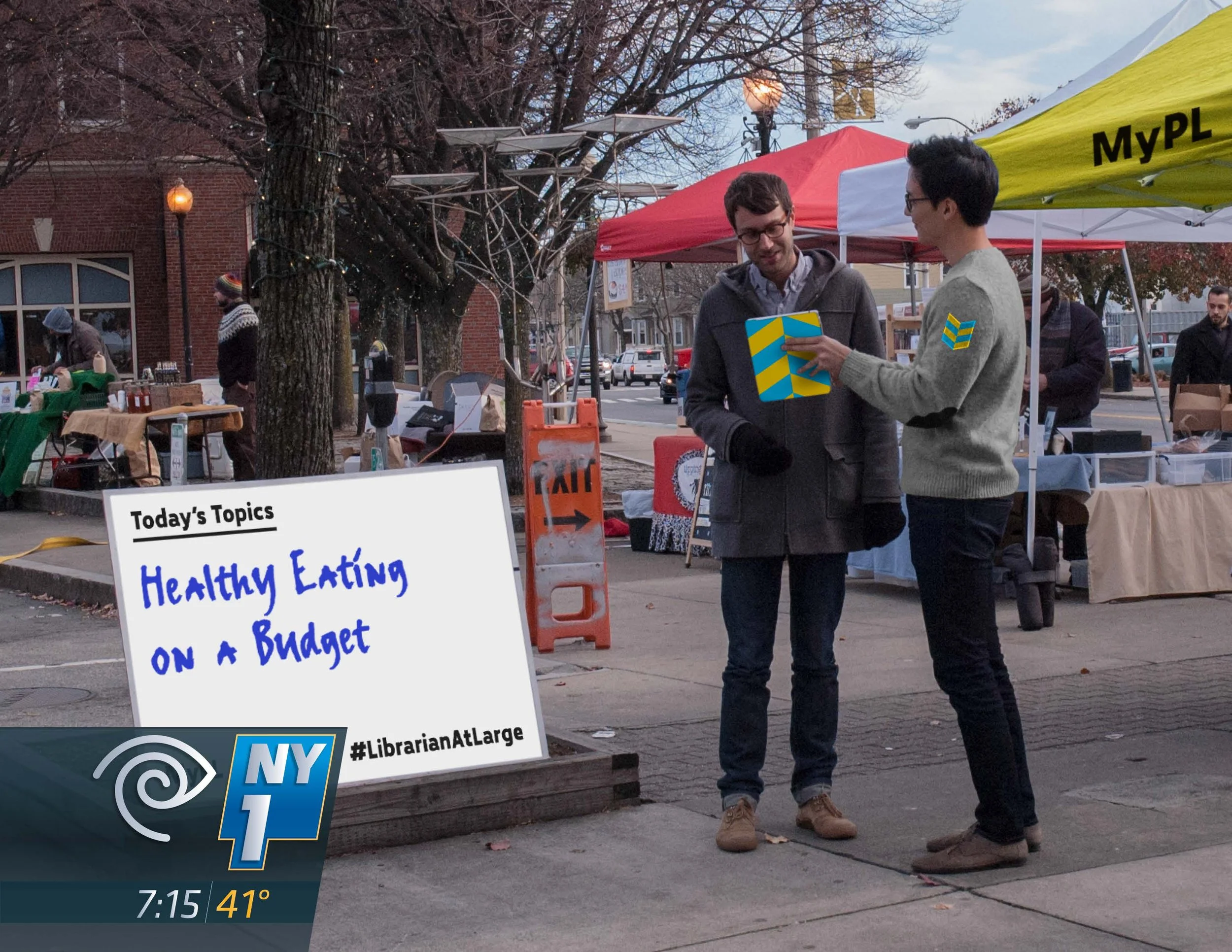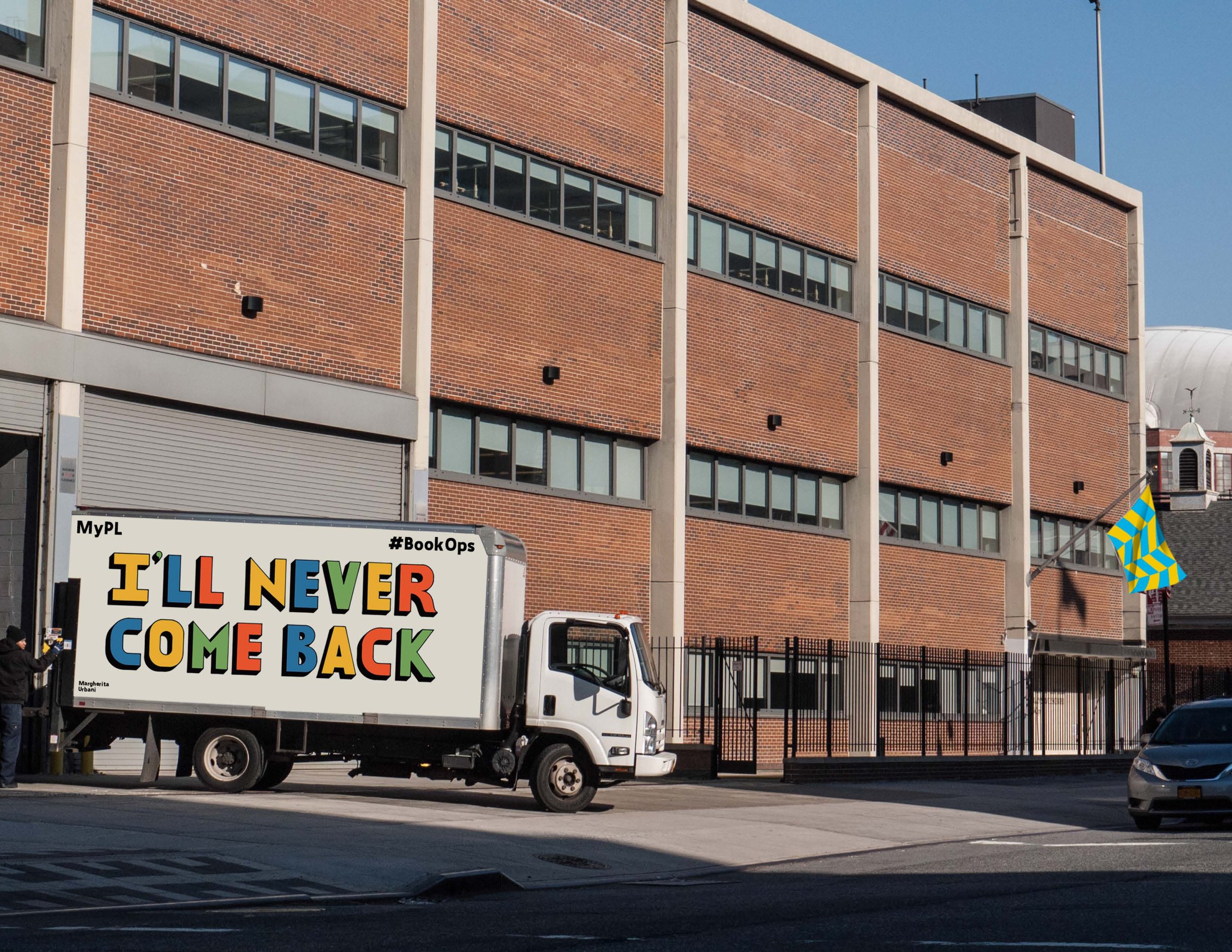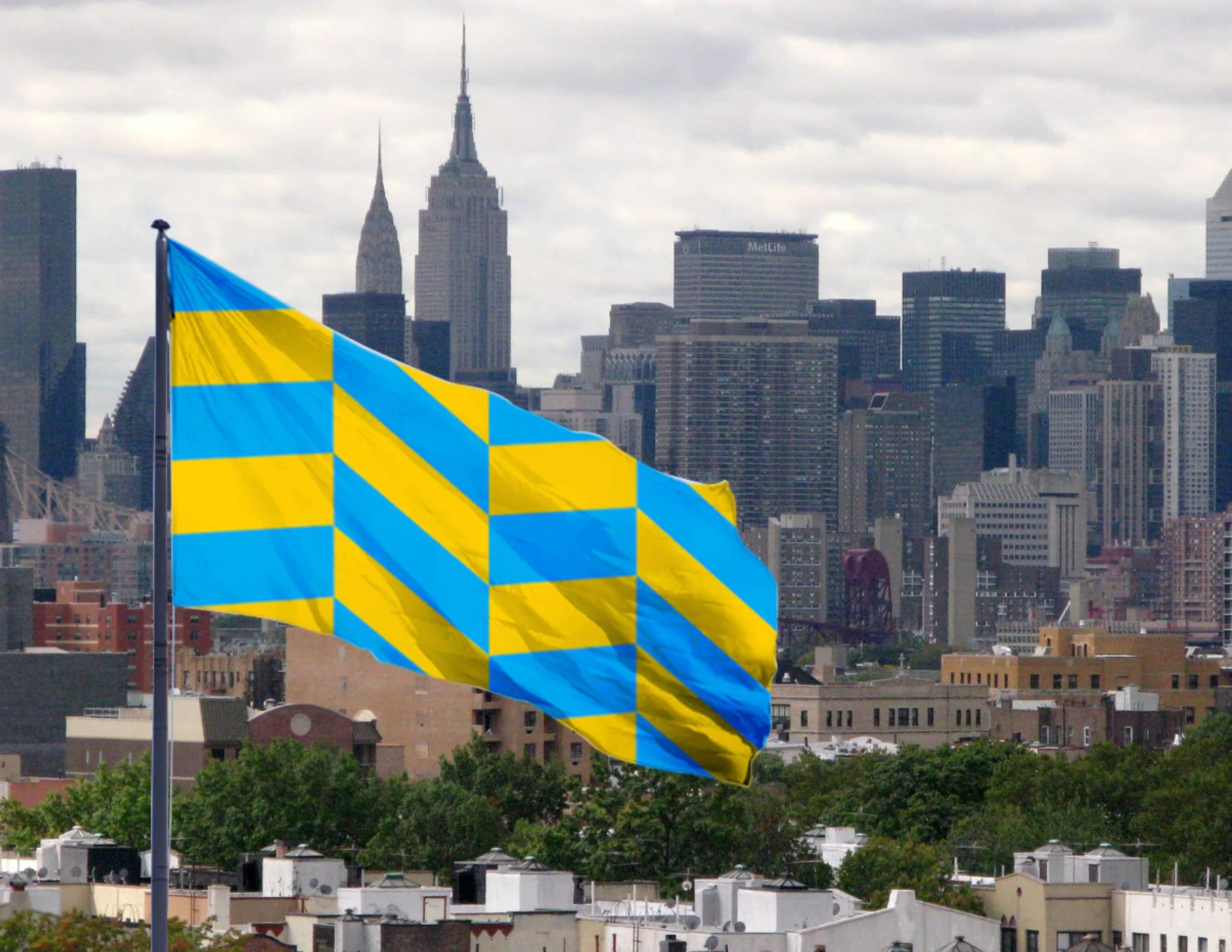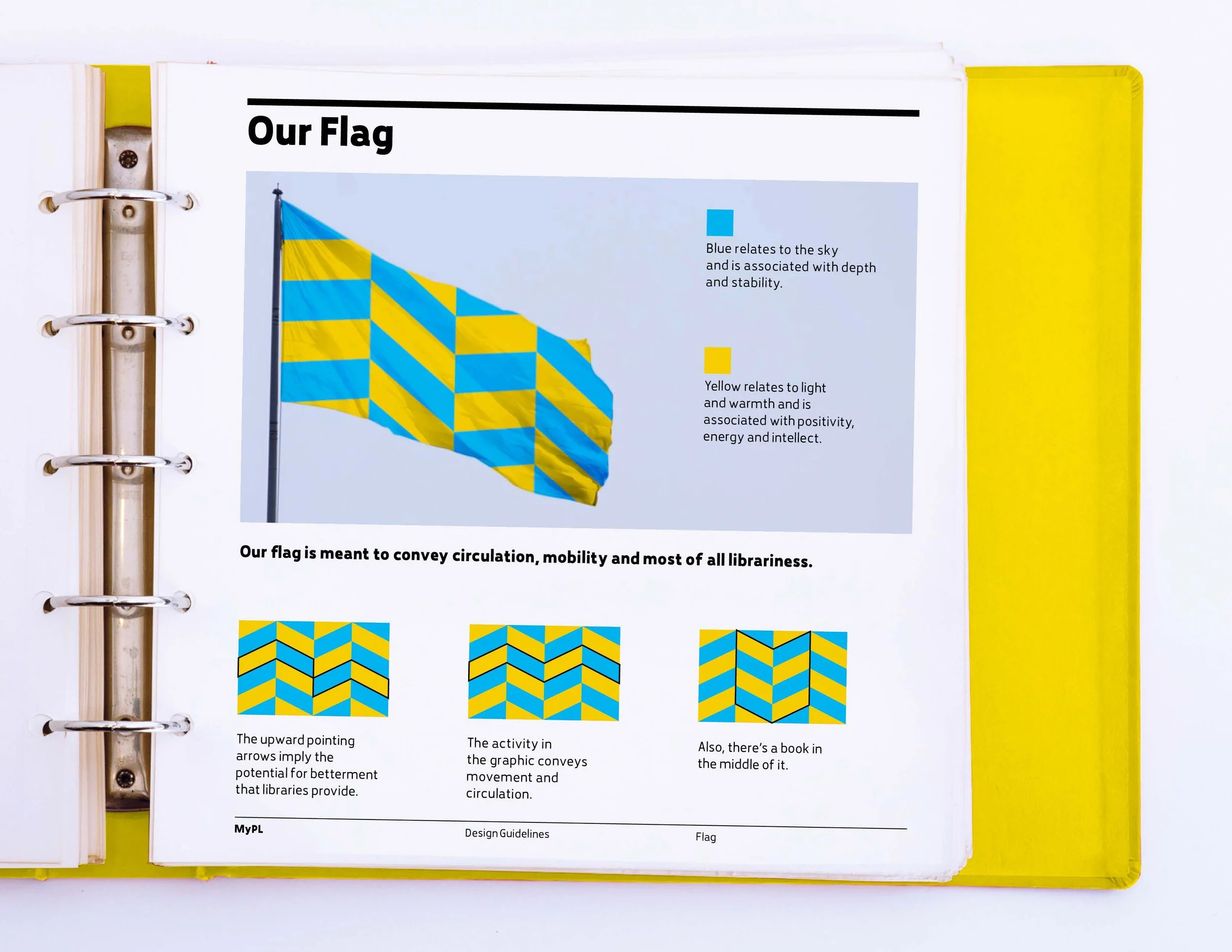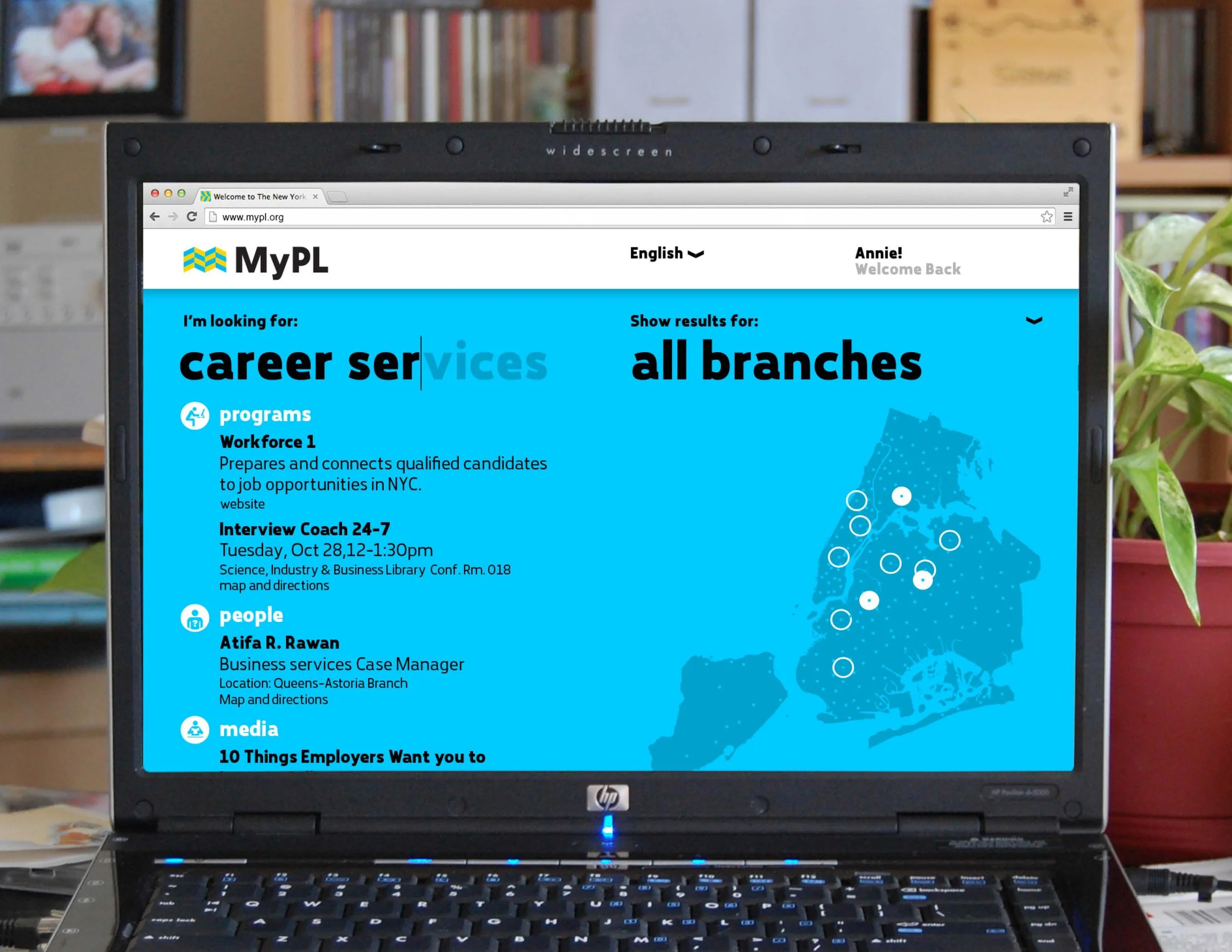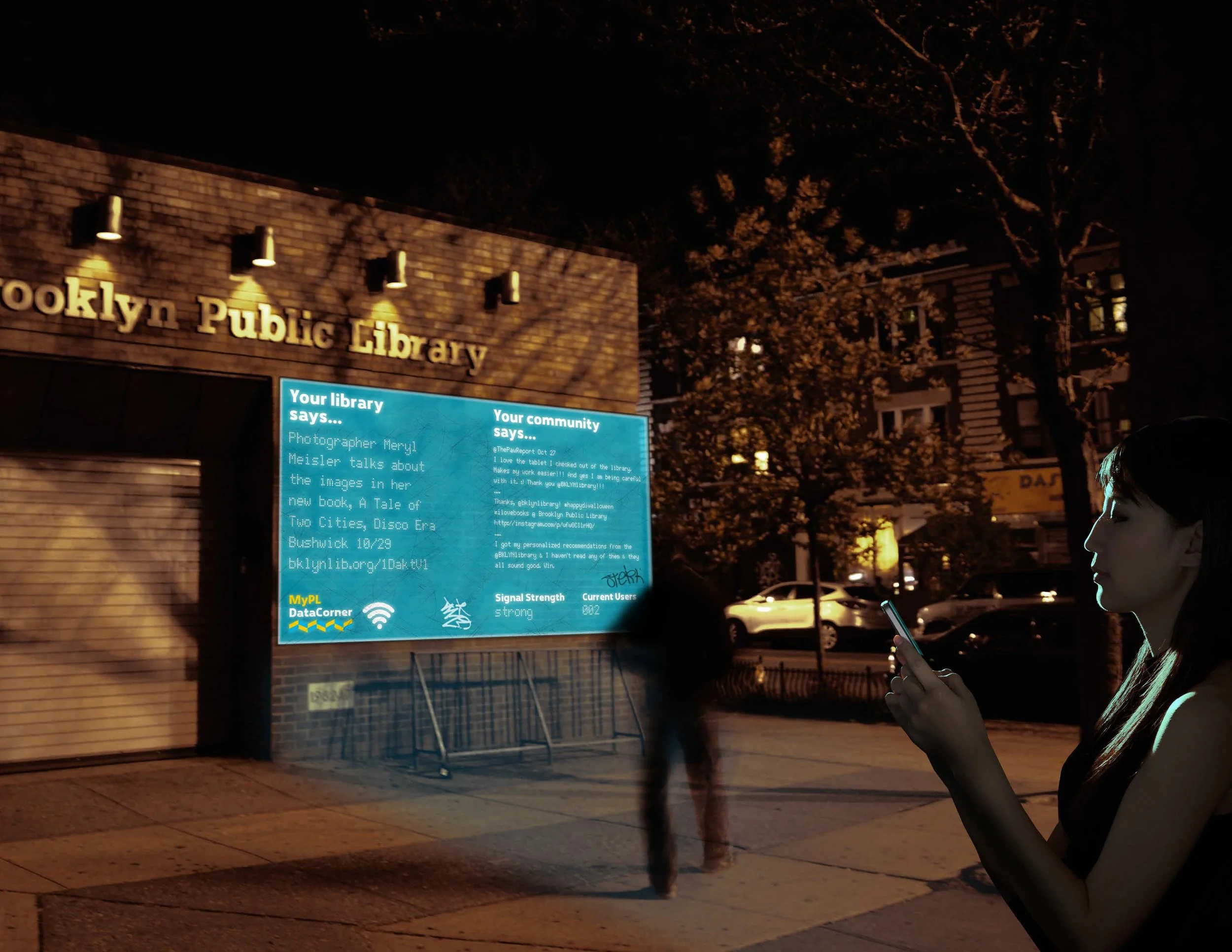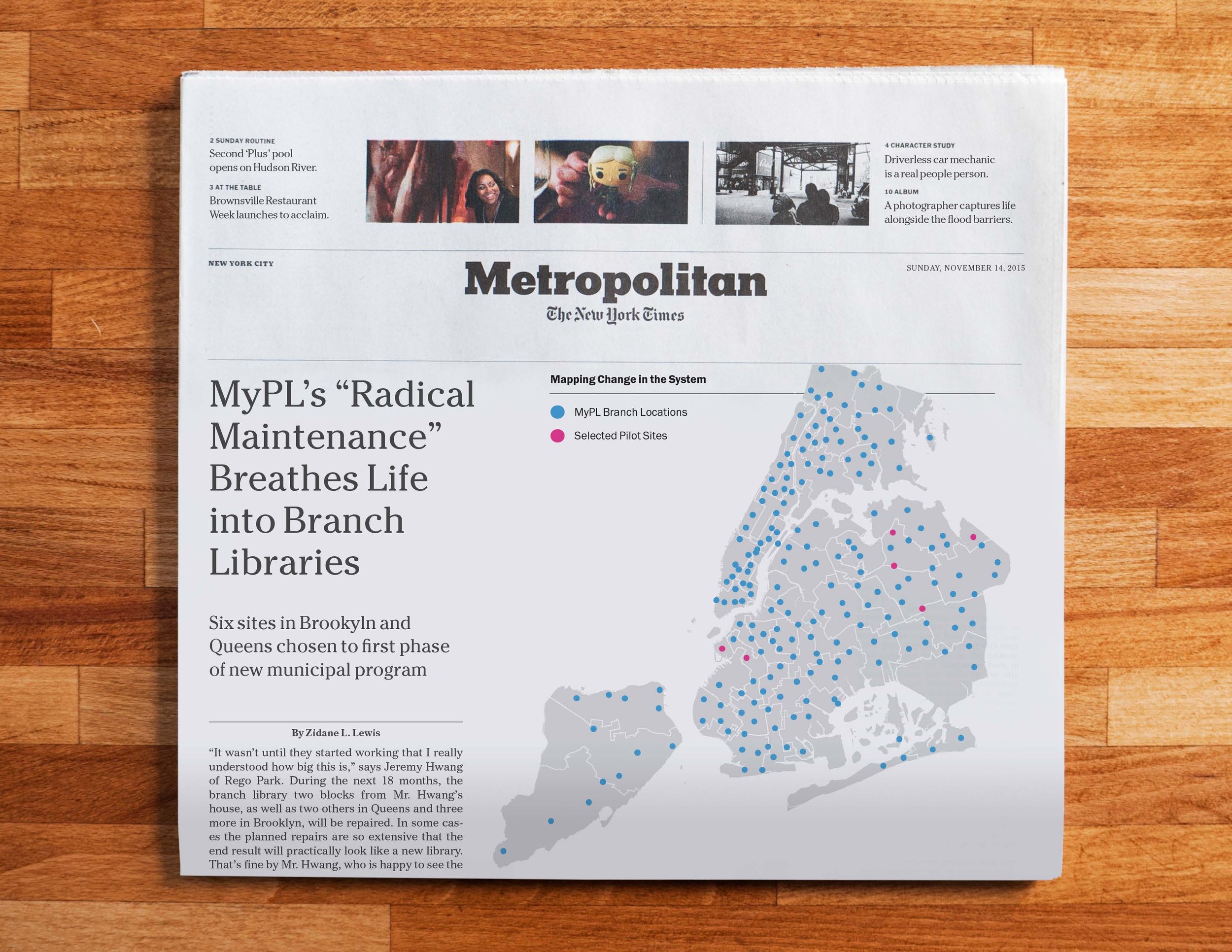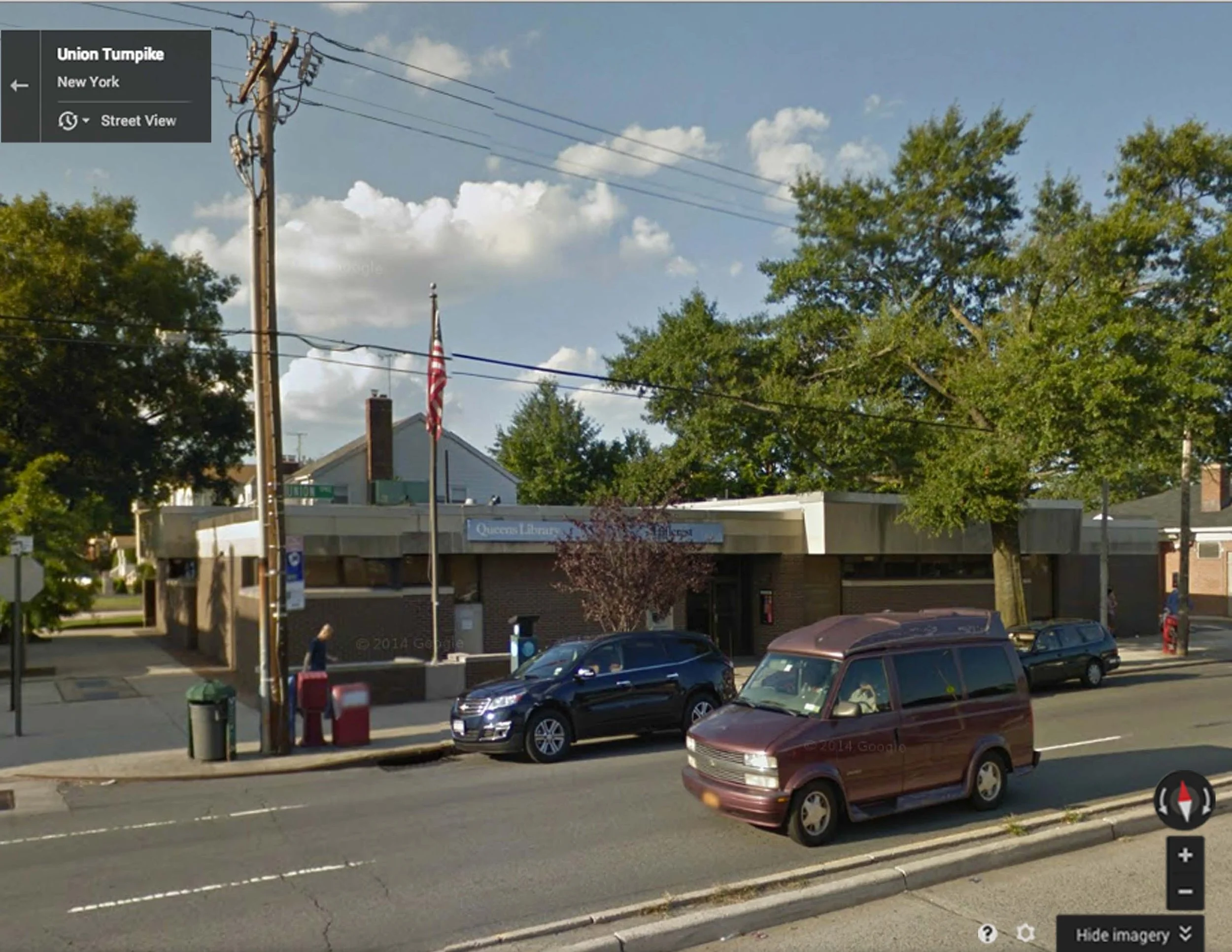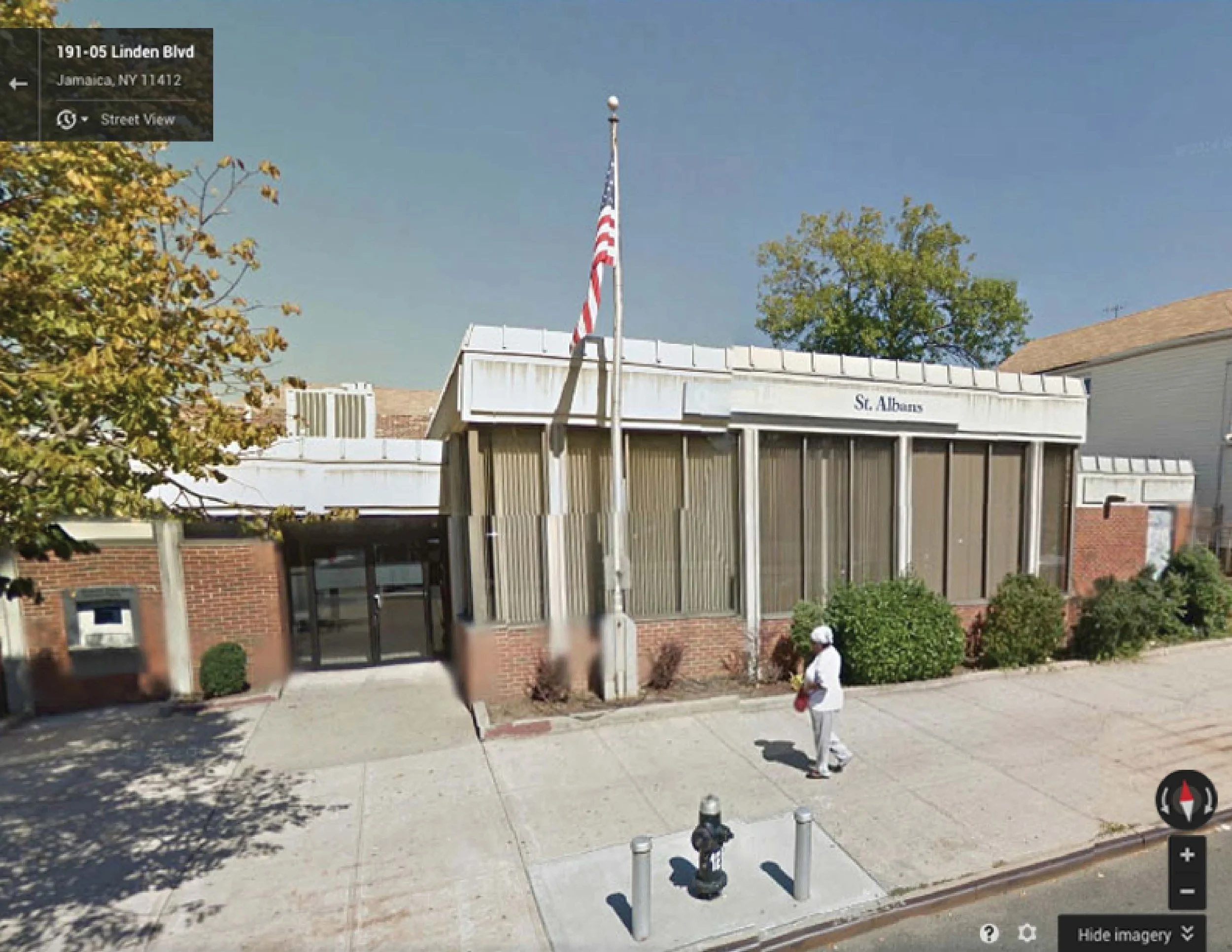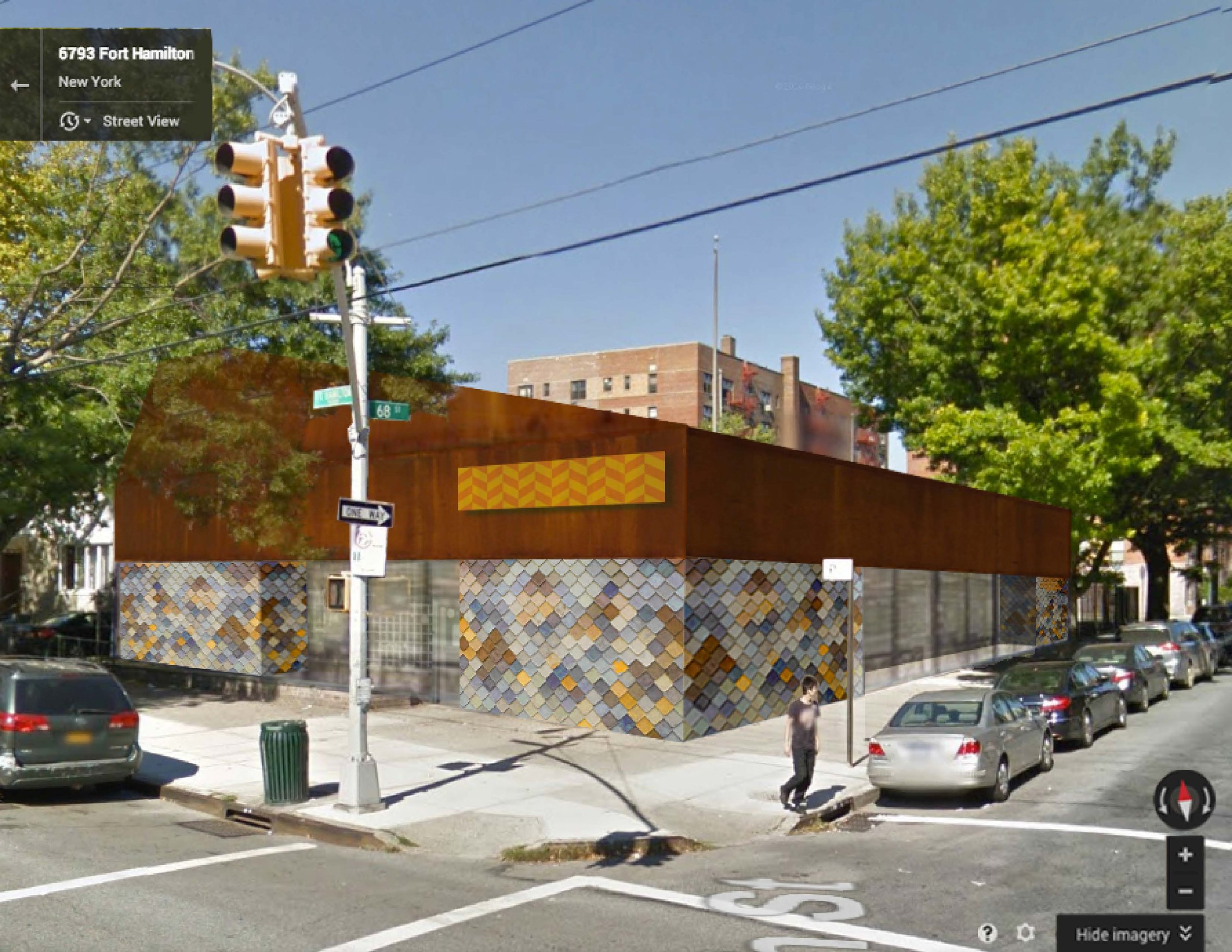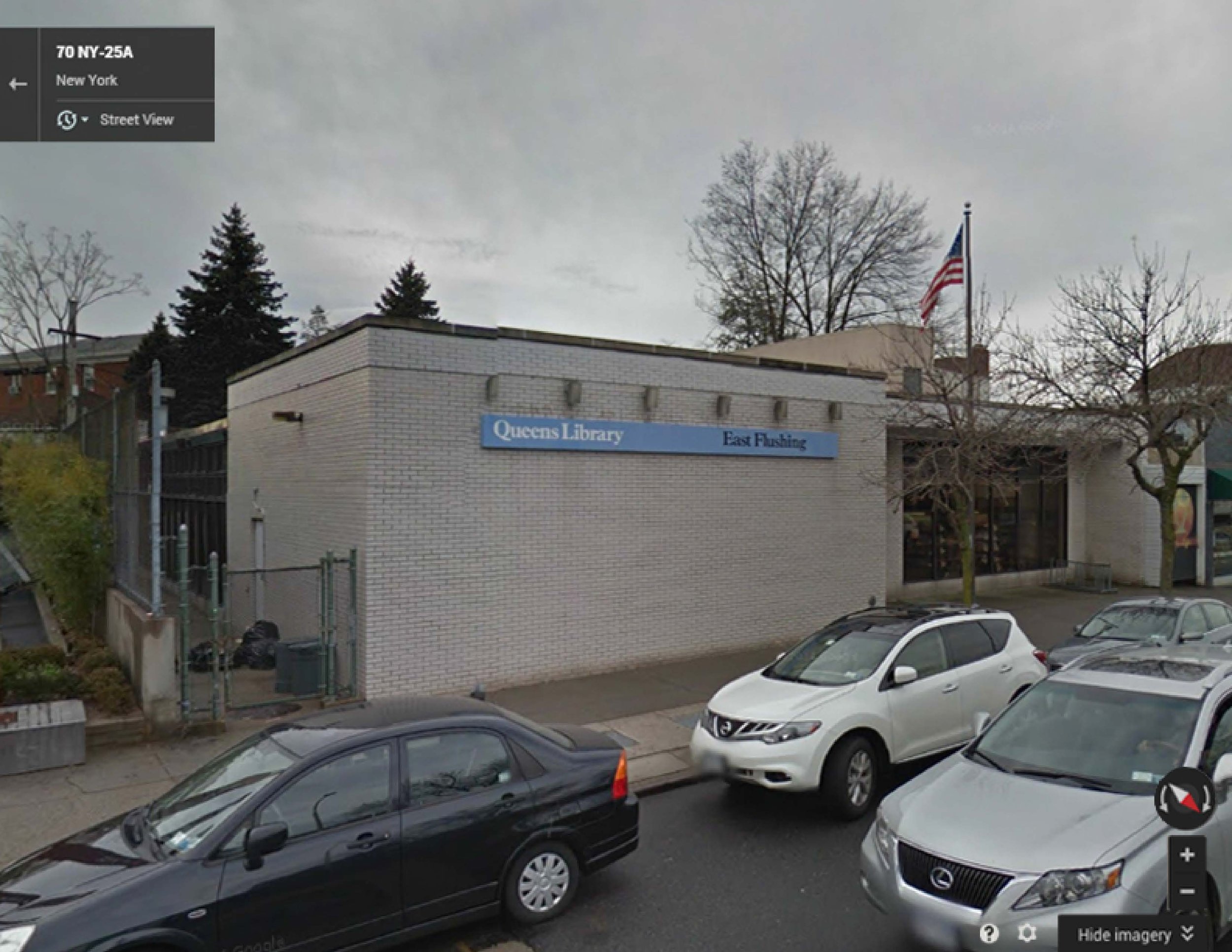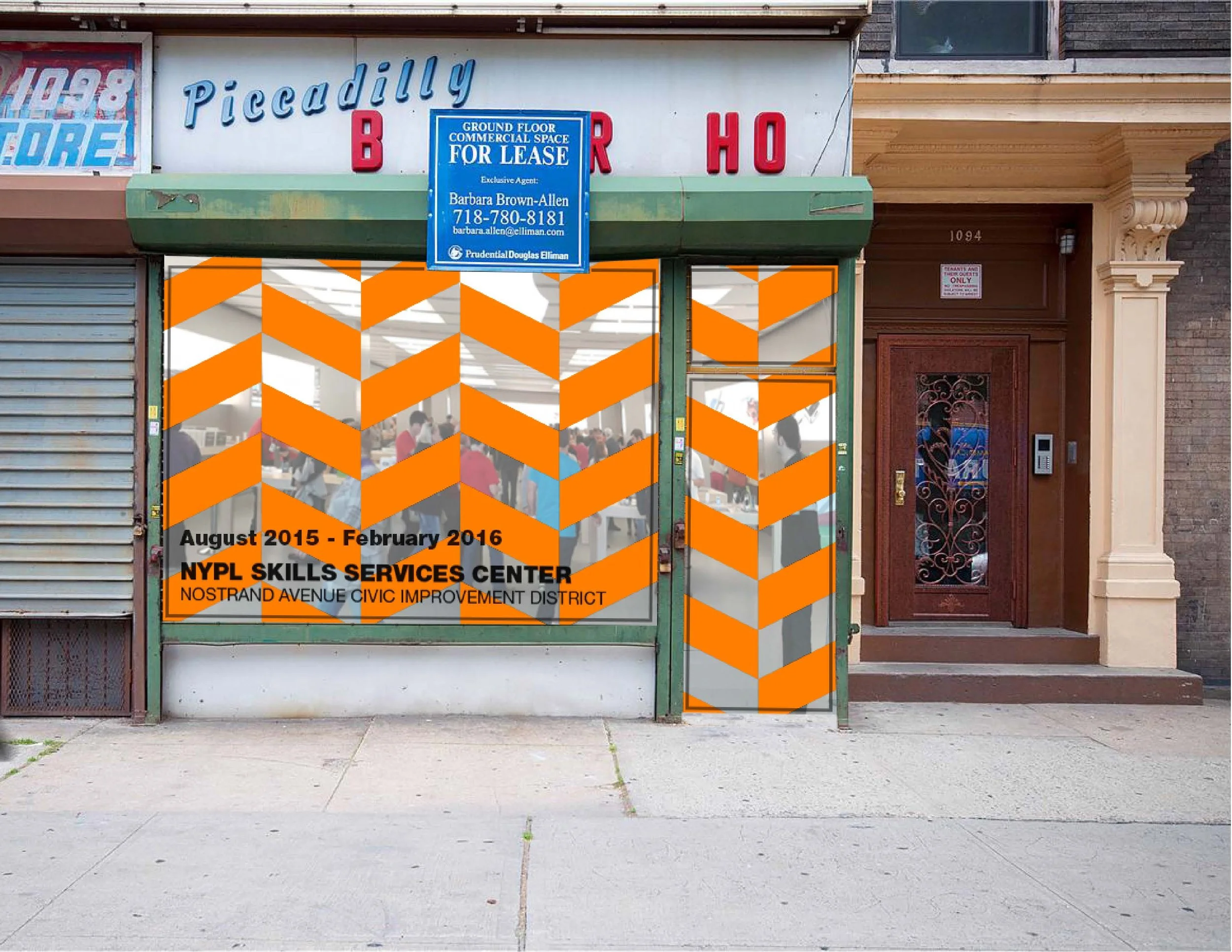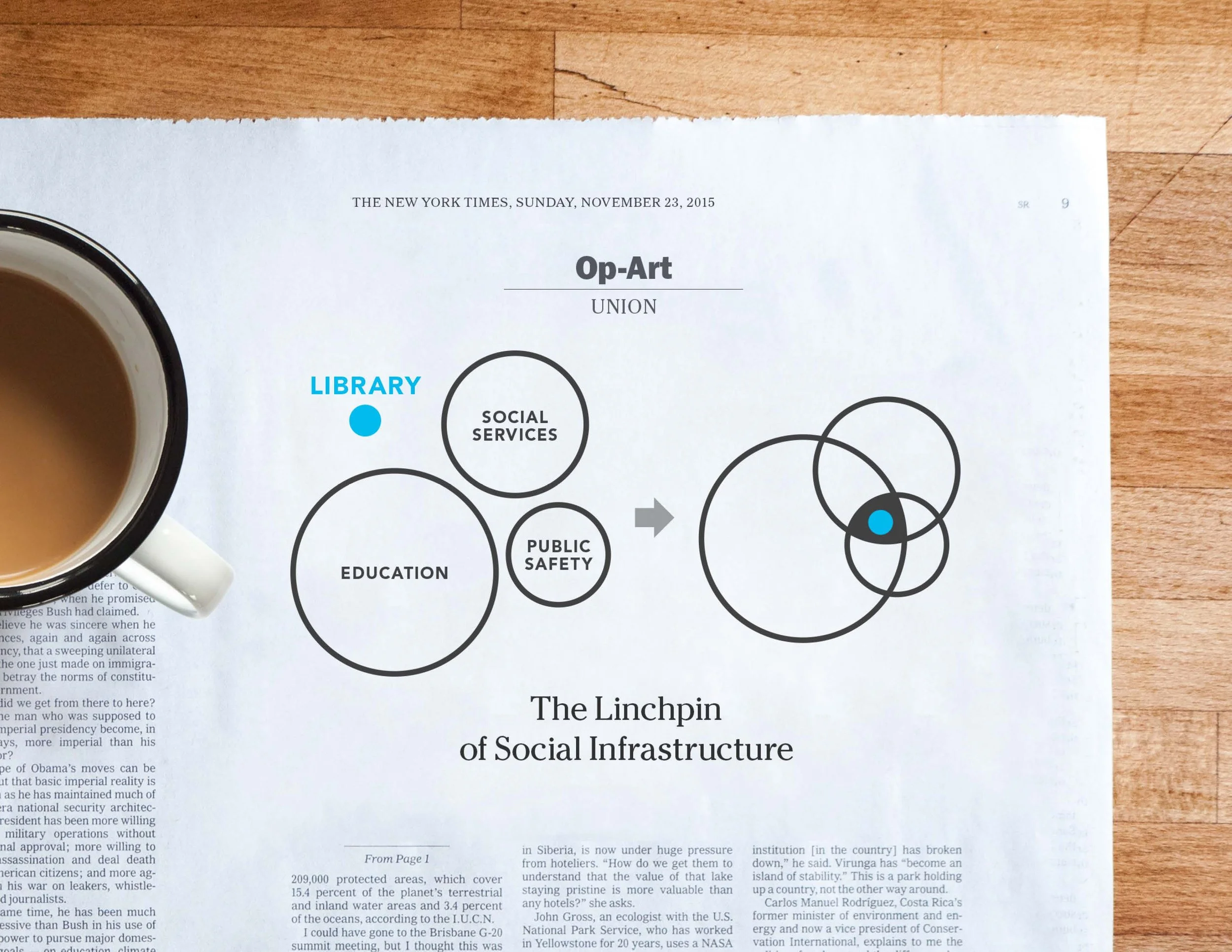
LIBRARINESS
Scope: Research
Type: Civic Strategy
Client: Center for an Urban Future + Architectural League of New York
Location: New York City
Team: This project was completed by a collective of studios and independent designers working under the name UNION:
Annie Barrett Helen Han
Sapna Advani Jane Lea
Bryan Boyer Adriel Mesznik
Landon Brown Ryan Thacker
Scott Geiger Ann Baird Whiteside
Librariness: Roof Lab Design Studio concept diagram
We developed a strategy to help NYC’s branch libraries gain the recognition and funding they need to thrive in the 21st century.
Despite serving 37 million visitors in 2014, nearly four times as much as every major sports stadium in the city combined, libraries in NYC were suffering three challenges. First, the building stock was in significant need of repair after years of deferred maintenance. Second, New York City’s annual budget had no guaranteed funding for libraries, making it nearly impossible to make capital plans. Finally, as the smaller cousins to charismatic central library locations, neighborhood branches struggled to attract third party recognition and support.
Center for an Urban Future and the Architecture League of New York teamed up to bring attention to the connected issues of institutional reform and physical retrofitting. They invited five teams of designers to envision the future of NYC’s branch libraries.
The call asked for an architectural response to what we understood to be an institutional challenge. Recognizing that the problem was larger than available resources, we developed a strategy to move from “actionable” to “imaginable,” with proposals for the role of Leaders, Monuments, and Mechanisms. Specific proposals bring this matrix of possibilities to life.
Our vision was presented at a public forum hosted by CUF and Architecture League as a ‘slow film’ pairing slides and live narration. Printed broadsheet newspapers made it easier for people to take the ideas home with them.
The presentation is also reproduced in full below:
This is the story of how modest, creative actions taken today can catalyze dramatic transformation in the city tomorrow…
It’s about the New York City Branch Library systems, and it’s based on the concept that a visionary idea, in the right hands, at the right time, can change the course of our future.
So where does the story begin?
What if we took something as small as a library card, and empowered it to act as part of a unified library system across all boroughs. The change would be symbolic, but also tangible – granting access to an abundance of public amenities throughout the city.
But what if the library card could do more? If connected to other institutions, the library card becomes the link between services across the city, like a subway…
…or a public pool. The convenience of this approach strengthens the library by bringing it into our daily routine.
(Thanks to our friends at FAMILYfamily for the Plus Pool image)
Blurring the boundaries of the library begins to happen more literally as well. With a budget of nearly zero dollars, the Librarian at Large program brings the guidance of New York’s dedicated front line staff into places where contact with the public is even greater, and during hours when the libraries are closed.
So a librarian might be stationed on the transit lines serving his or her branch to connect with people who can only come before or after work, or set up at a neighborhood greenmarket on the weekends.
Of course, books already move beyond the walls of the libraries, by virtue of the floating collections enabled by Book Ops since 2013. As the program grows, Libraries will leverage these trucks as a visibility platform curating a series of murals that express the mobility of the system and spark curiosity.
Like other temporary arts projects in the city, these rebranded book trucks become something to see and be seen with—taking on a life of their own on social media.
Later, they’ll fade into the background alongside taxicabs and police cruisers as just another one of NYC’s iconic vehicles.
A new identity system for all of the city’s branches crystalizes small-scale efforts, increasing the visibility of this unified system that operates at the scale of the city, the borough and the neighborhood.
The basic graphic, which is shown on the flag, conveys circulation, mobility, and most of all, librariness. The upward pointing arrows imply the potential for betterment that libraries provide. The activity in the graphic conveys movement and circulation.
And also, there’s a book in the middle of it.
As the Libraries reach more and more into the lives of the city, everyday people begin reach back. Grassroots participation by regular citizens starts to have bigger and bigger effects. Not just more people using the libraries, but the libraries begin to be shaped and improved by their users.
In places like Rego Park a self organizing group of volunteers would step forward to chip in with minor maintenance tasks on weekends. In this case bricks are mended and seating repaired within the days of the need being discovered.
But it’s not just the physical plant that benefits from outside attention. The library’s information systems are also ripe for reconsideration. Groups like Code For America begin organizing fellowships and hackathons that bring hundreds of people together to create a new online interface for the library.
Using part of a $1M grant from Google, the Library system builds open APIs that allow a profusion of home grown library apps to be built without introducing the risk or clunkiness of an official redesign process.
This experimentation leads to a stronger and easier to use main website.
MYPL allows users to discover not just artifacts, but networks.
By simply and clearly linking resources across the city, this interface starts to become an important channel where citizens learn about the happenings of their neighborhood.
Through library work stations, home computers, and mobile devices but also buildings, bus stops, and streets.
Then something interesting starts to happen. Cultural institutions begin to transform their own programs to engage the expanding library audience. And with these institutions comes their funding. In other words, the small investments the library made in enhancing its own visibility, helped unlock larger pools of capital.
Think of this as institutional leverage.
For example, museums like MoMA begin to redirect their energy and resources, selecting the more socially and politically relevant site of a library roof structure as the focus of their annual “young architects program” that draws the attention of the best and brightest young designers in the country. With this new social focus for the program, MoMA and the library system together are further able to leverage private capital from companies eager to donate their building materials and construction time to be part of a high profile project.
After seeing MoMA de-risk the idea of pairing maintenance needs with innovative architecture, the City moves forward to launch a comprehensive “Radical Maintenance program” to address the Library system’s $800M in state of good repair needs. Radical Maintenance represents a bold change in the way spending on libraries happens. Leveraging required repair costs to meaningfully transform the image and the experience of library buildings.
The program begins with a focus on the so-called ‘Lindsay Boxes’ designed and built in the late 1960s and early 1970s. These are typically small, single-story structures which were built quickly as part of an ambitious campaign to expand the branch system through the outer boroughs.
What was sacrificed in grandeur was made up for in number, there are over 65 of these modest structures across the city, and they expanded the reach of the library system to neighborhoods in need. These outdated buildings are in need of major infrastructural repairs with massive capital needs which are essential in order to keep the doors open, yet invisible, and therefore fraught as the centerpoint of a capital campaign.
Branches are evaluated for inclusion in the Radical Maintenance Program based on the scope of required upgrades. Those with the highest need are selected first.
A catalog of simple interventions provides enough variety to meet diverse needs. All of the approaches fix invisible maintenance issues by using highly visible repair solutions. This addresses functional basics while enhancing the library’s presence in its local community.
So, for example a library like Hillcrest in Queens which has $1.4M in state of good repair needs including a new roof, all new mechanical system, and comprehensive electrical upgrades would already require considerable demolition of the ceiling, roof structure and intervention in existing exterior walls. Through the Radical Maintenance Program, Hillcrest is transformed to welcome the street and offer an iconic silhouette to the neighborhood…
Slides show before and after.
The roof also transforms the use and organization of the building by bringing daylight into an otherwise deep and dark space.
Strategic insertions like these, help the library get the most out of expenditures that are currently only used to maintain the status quo. Moving from budget allocations that merely seal the roof, to considered investments that make the roof an embodied symbol of what libraries offer.
For example, at the McGoldrick branch the roof becomes an occupiable public space for community gatherings.
Slides show before and after.
In Queens, more light is brought deeper into the space by adding clerestory windows behind a decorative screen.
On 68th street in Brooklyn, a blocky, impenetrable building is opened to the street with a new façade.
In Flushing a completely blank wall becomes an opportunity to create a strong connection to the street, showing what’s happening inside.
The Radical Maintenance program is not only about restoring buildings to a state of good repair, but also taking the opportunity to consider forward-thinking resilience.
The single story library in Red Hook is one of many Lindsay Boxes that sit in a flood zone. No matter how much repair is done here, rising tides will always be a threat. To address this, the library is elevated, and a new space is created below. Community activities that happen in this public space are captured in the mirrored underside of the building.
A new mirrored roof offers environmental benefits, and also reflects the sky and extends the library presence beyond even the scale of the city.
Radical Maintenance projects directly improve physical infrastructure and resiliency, but they also activate their communities by advancing creativity, innovation, and curiosity.
The very fact that the projects are happening becomes a chance for the city to change the way it talks to its residents about public works, through new construction signs that are informative and engaging.
This changes the way people relate to their local branch, and provides more opportunities to learn from the process of rebuilding the city’s social infrastructure.
And that happens in more structured ways too. Local universities get involved in the Radical Maintenance Program by tying library-specific challenges into the curriculum.
This works for vocational training as well by using the renovations of branch libraries as workforce development opportunities. The potential scale here is significant: when 65 – or 207 – libraries are part of the Radical Maintenance program it won’t be just the two young people on this billboard that are happy to be learning new job skills.
Rebuilding local libraries will inevitably mean periods of closure – and this fact of life becomes a chance to think of the positive effect that could be manifest for a district.
When a branch library goes offline for maintenance, critical civic programs and services that must not be interrupted migrate to nearby underutilized properties, including commercial, mixed-use, and public assembly spaces in the immediate vicinity.
To contend with interruption, the singular edifice of the library temporarily dissolves into a network of smaller spaces with individualized programming.
Meanwhile, there’s one group of stakeholders that’s increasingly absent in the library: the affluent. When neighborhood branches enter the maintenance cycle, there’s a possibility to turn some of these spaces into revenue-generating assets for a limited time.
These special events would strengthen recognition from civic leaders and potential donors.
Everything we’ve shown today leads to this. The scale of the library’s current needs are politically untenable when seen as pure “costs”. The portfolio of interventions seen above have been designed as a series of incremental investments that build upon each other..
The library’s position as the linchpin of social infrastructure means that dollars spent on libraries translate into benefit across a wide variety of outcomes – from education to health to disaster resiliency.
Investments in our libraries are. not. line items. They are tools that connect disparate but critical functions of the city.
If the public library system is to thrive, libraries must move from the margins of civic life to its center.
Let’s view these costs as they really are: an investment in the future of New York City.
Doing so means enacting this portfolio of strategies to help the city visualize the library’s true importance.






